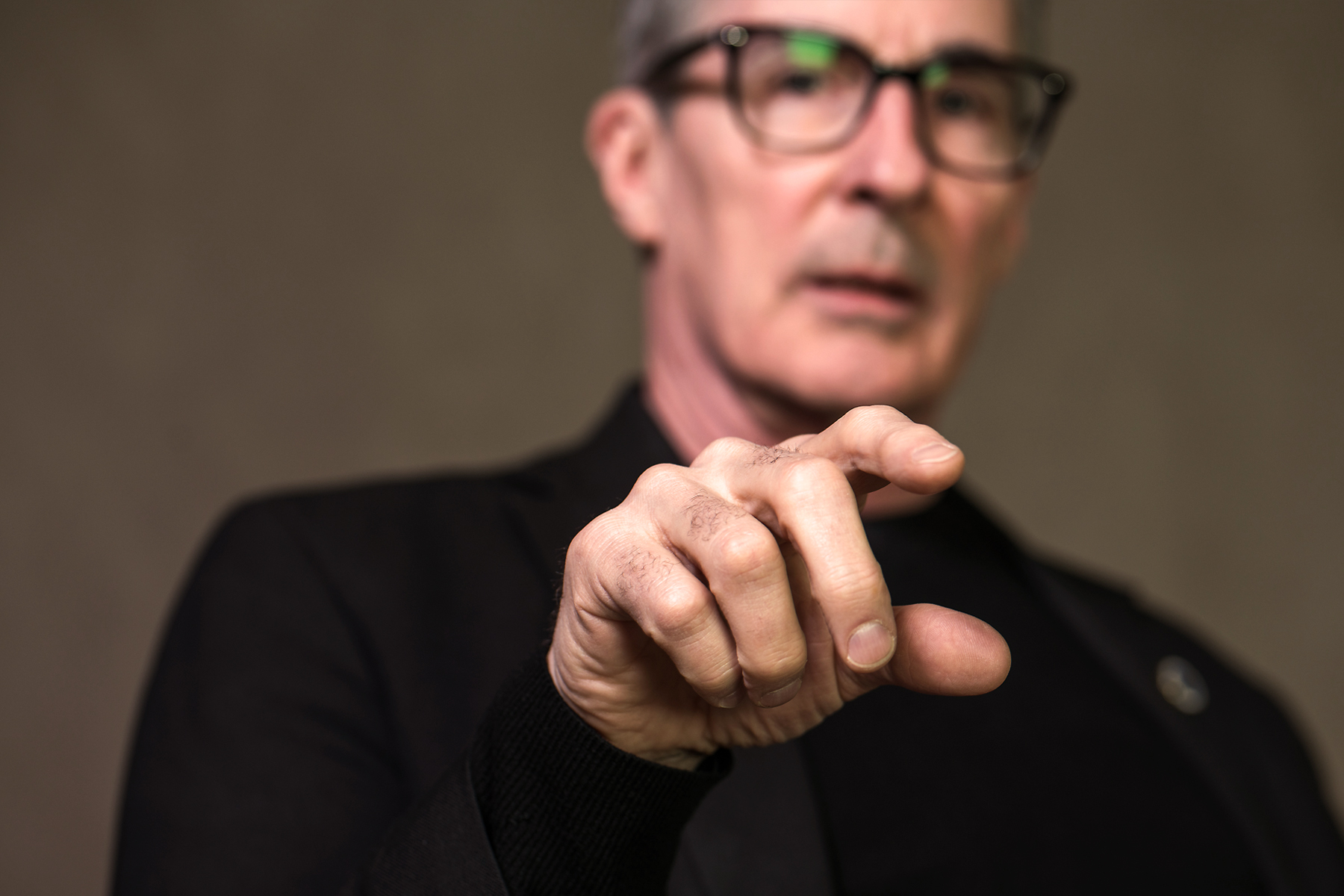You’ve had notable success as an artist, as a popular professor, as Art Department chair, and as an administrator. How do you measure success, and what advice would you give someone hoping to achieve it?
I think about … was I honest, did I help someone, could I have done more, what will I need to improve next time? These are all questions I’ve asked myself since I started teaching at NEIU. I’ve been involved in an area that was constantly changing, constantly learning new tools and keeping up with changes in technology, and that was something that carried over from my teaching to my administrative role.
This also helped me think about the future: How does what we do now affect what others will do with the skills? Let’s make sure we give them a strong base to work from, providing tools and skills enabling them to be creative and help them do something unexpected in the future.
I think that my success is based on my never-ending goal of trying to make things better. What do students need to be successful, what does the University need for our students to be competitive, what can I do to help others meet their goals? I measure my personal success by being helpful and collaborative to help others secure their goals.
You said your life path as a new media artist happened by chance. What was exciting about this relatively new and unexplored field? How did you grow with the genre itself through the’70s, ’80s and ’90s?
The exciting part was that it introduced me to digital technology. Even though machines were simple and images were low-res, it opened up a new world for being an artist and recognizing how many disciplines would be affected both commercially and creatively. It led me on a path of collaborating with chemists, biologists, mathematicians, educators, linguists, traditional artists, and directors as well as students from those and other disciplines. Being able to generate animations, 3-D models and creating interactive environments and looking forward was exciting. The new tools and technology also brought you to places that would have taken forever using traditional tools. The ability to have three different projects processing at the same time while I was working on another was awesome. These early days introduced me to multitasking, which led to years of taking on too many projects.





Can you explain the STEAM initiative and why it is important going forward?
STEAM is another way to get students (and faculty) to realize that we’re equipping students with transferable skills and new approaches to problem solving. It’s a truly interdisciplinary experience. Students are being exposed to an interconnection between the arts and sciences, leaving courses with adaptable research and design skills that will be necessary in solving real-world problems.
STEAM is an opportunity for students from the arts and sciences to interact and collaborate on problem solving with each other, recognizing that we share a common language and can learn from our each other’s design and problem-solving processes. Just think: A university that recognizes that the visual and performing arts and sciences are viewed as parts of the same whole, not separate entities.
How can universities adapt to reflect the needs of both modern students and the evolving real-world environments they are entering?
Move out of their comfort silos. It’s important that students recognize the wide range of skills that they’re leaving the University with. Students are leaving school with skills that can be applied to a wide variety of disciplines outside of the disciplines they were trained in. We have an obligation to make them recognize that.
You’ve suggested that as people we are mostly after many of the same things and trying to fulfill a lot of similar needs, that a commonality exists among us. What can we do culturally and institutionally to teach, learn and recognize this?
I was reminded once that everyone has a story, everyone has experiences that have shaped their thoughts and beliefs. Everyone needs to think about that, we need to stop thinking about “me” and appreciate the fact that we all want what’s best for us and society.
We need to listen, lose the anger that some of us carry around and think about how we can make NEIU better for all. Can we agree to put students and institution first? We’re kind of in a catch-22. Students are defined by institution status; the institution is defined by the student and faculty success. We need to recognize who we are and what we do well. Once we can agree on that, we all need to start moving in the same direction. This is awesome palace and doesn’t get the recognition it deserves.

Please complete this sentence: I’ve been at NEIU for 33 years, and I never would have imagined …
… that I would be so blessed to meet so many wonderful people, and that I would end up learning so much from them.


